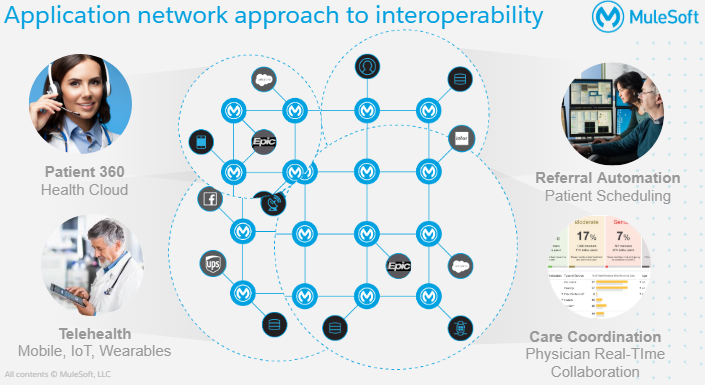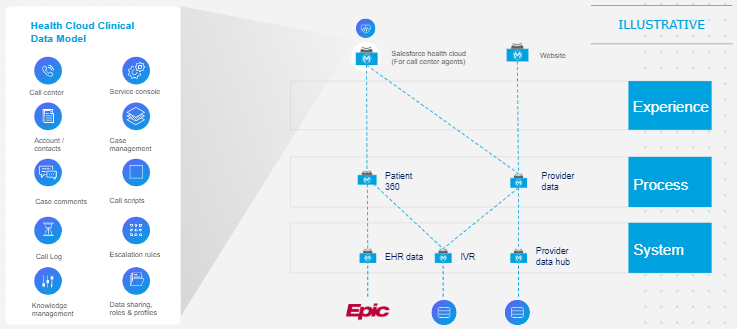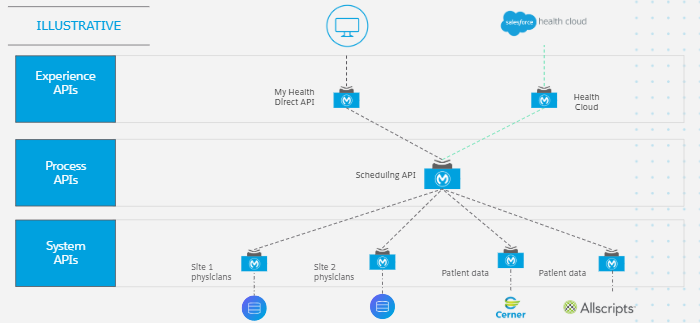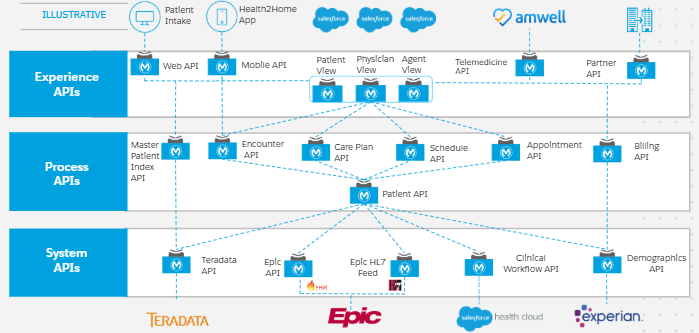There has arguably never been a more optimistic time for interoperability in healthcare. The possibility of fully unlocking clinical data touches everything — from reducing costs and improving outcomes to powering telehealth and bringing house calls into the digital age to enabling the next generation of cancer care.
But barriers still remain to achieving interoperability that must be overcome. Below we share the vision we co-announced last summer at the White House for achieving true interoperability and driving transformation in healthcare.
An API-led approach to healthcare interoperability
MuleSoft has long championed APIs for driving digital transformation. As a Gartner-recognized leader in API management and enterprise integration, we’ve seen how thousands of companies have leveraged Anypoint Platform capabilities to accelerate digital transformation — all from one platform. With MuleSoft’s HL7 v2 and FHIR capabilities, alongside pre-configured connectivity to healthcare partners such as Bridge Connector, 1UpHealth, and Verato, IT teams have the tools necessary to move away from point-to-point integrations and toward an integration approach that enables truly interoperable, connected care.

Driving digital transformation via application networks
Having one platform to design, deploy, manage, and monitor all of your clinical and non-clinical connectivity needs makes wide-scale digital transformation possible. MuleSoft refers to this as the application network approach. Let’s see how this approach can be applied in healthcare:

Project 1 – Patient 360: Let’s start with contact center modernization. By leveraging MuleSoft’s HL7 V2 connector, FHIR templates, and pre-built integration templates, IT teams can easily design APIs and integrations from our Design Center to surface key EHR, IVR, and ERP data into one Patient 360 portal via Health Cloud, removing ‘swivel chair’ processes for call center agents.

Project 2 – Appointment scheduling: Now that your call agents can field inbound needs in real-time, we can also enable patients to self-serve their appointment scheduling needs. With the patient API built from Project 1, your LOB IT team can easily find it on Anypoint Exchange, build a new API for physician calendar data, and power a new scheduling app that can find the right physician at the right time across multiple sites or care.

Project 3 – Telehealth: Now let’s say you wanted to provide telemedicine and aftercare instruction for patients needing personalized care. The APIs built from Projects 1 and 2 can be reused again on this project. And all of your organization’s APIs and integrations can be safely monitored from one dashboard in the Anypoint Management Center.
Interested in learning more? Read our interoperability pledge. Join MuleSoft at Healthcare Innovation’s 2021 virtual healthcare delivery series on meeting interoperability and Federal data-sharing requirements.









